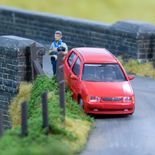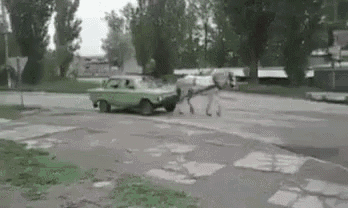-
Posts
528 -
Joined
-
Last visited
Content Type
Events
Profiles
Forums
Media Demo
Posts posted by Circloy
-
-
Don't think I've ever seen the AEC 0854 done with an early cab before or the Bedford in it's true WW2 form.
Excelent result on both.
-
 1
1
-
-
1 hour ago, Kingsman said:
Supply to US forces in the UK for the same reason (seems unlikely).
Perhaps not as unlikely as you think.
Why risk shipping paint from the US if it could be produced in the UK and more valuable/critical items shipped accross the Atlantic instead. Factor in not only the demand for the US army & UK conversion of equipment but also that of the USAAF, who were in combat and patch painting repairs to battle damaged aircraft and there's probably a sizeable demand.
There is clearly a need to understand the usage of UK produced olive drab & I doubt after 80 years It's going to be easy.
-
 2
2
-
-
'Wings of the RAF' confirms that RAF supplies in the 80's remain much the same as it had been since the 20's i.e. by fuel supply companies own road tankers. It does acknowledge limited direct rail & pipe line supplies.
Fuel supply contracts were most probably placed by the MOD and not by each individual service arm and supplies to army & naval bases were probably the same. Heavy fuel for ships would be one exception probably rail.
I'm intrigued by the OP comment a to a functional diorama it gives me visions of real fuel being pumped between rail tanks & road tanks & the road tanks driving off*.
*I am aware OO die cast vehicles have been motorised, but never carrying a load.
-
Updated my Calander thursday night to include (known) upcoming shows, this is definatetly in as it's never been a disappointment. Though, with the bargains to be had, it has been expensive @ times.
-
 1
1
-
-
Just looking at that last link, if the official mix requirement is as imprecise as "a mixture of 40-60% yellow ochre, 15-20% zinc chromate, 10% ultramarine and 10-20% white" there's a high probabilty the suggested Tamiya mix will fit somwhere in the ball park.
-
-
14 hours ago, ckw said:
Drives me mad! Would it be that difficult to have signs that said "Left turn/Right turn ahead closed" ? Add a distance for bonus points
Well, more signs to purchase, bigger vans to carry the extra signs, van crews that can read, training them to understand the difference between left, right & ahead, a team leader that is qualified to make the executive decisions required and carry out risk assessments, ...
Easier and more fun to plonk a one-size fits all sign out and confuse the public.
-
 1
1
-
 1
1
-
 1
1
-
 1
1
-
-
Why when I hear "un-sliced bread" do I ask myself who's glued it back together?, surel it's non-sliced.
-
 5
5
-
-
22 hours ago, Mike said:
white goods.
egg white?
-
 1
1
-
-
Of course in the late 70's / early 80's there was a whole genre of music that lay behind every teen's inability to get out of bed
Bunk rock
-
 4
4
-
-
6 minutes ago, Kingsman said:
I don't think they had any towed guns
According to Wikipeadia 400 were supplied through Lend Lease
-
Ferris Buellers pay out
-
 2
2
-
 1
1
-
-
Bored of the USA
-
 3
3
-
-
A few more Queen near hits
Fat Bottomed Grills
Seven Seasoned Pie
Crazy Little Thing Called Dove
Another One Bites The Crust
You’re My Best Fiend
Somebody To Shove
In The Lap Of The Dogs
Radio Dah Dah, (Dit Dit, Dah Dah Dah )
-
 4
4
-
-
Caught up in all the hype of the weekend, saw Oasis advertised & in a panic hit 'Buy Now'
£600 quid lighter & discovered I've bought this:
Spoiler
-
 7
7
-
-
I want to break wind
-
 4
4
-
-
Dad's Barmy
The Wink Panther & sequels, incuding Inspector Clueless
The Pink Bantha
for T.V.
The big bank theory
Beastenders
-
 2
2
-
-
The more I drink, the more I pee,
The more I pee, the thirstier I am,
The thirstier I am, the more I drink.
I think its something they put in the water!
-
 3
3
-
 1
1
-
-
Do people buying electriccars get it on the HT?
-
 2
2
-
-
5 hours ago, bentwaters81tfw said:
Shouldn't the horse be at the back?
Ah! putting the car(t) beore the horse.
-
On 30/08/2024 at 08:54, Noel Smith said:
It will be shocking when everyone has an EV, plugs in at the same time and the grid cannot cope and, goes down.
22 hours ago, ArnoldAmbrose said:Won't be a problem if we all have petrol or diesel generators as back-up.
... and when they prevent the production of petrol & diesel.

meet the new Porsche
-
 1
1
-
-
8 hours ago, RichG said:
laser cut 3mm MDF
Ensure you seal the surface before glueing anything to it as the MDF will absorb water*, soften and loose what little strength it has. Ply does not suffer to the same extent as MDF.
* including water from PVA type glues & that contained in acrylic paints.
-
Unless it's for fun, I'm not sure why you'd go to the effort of trying to 3d print barbed wire when miniature barbed wire is avalable cheaply
Check out the bottom of page 319. (other sources available)
-
9 hours ago, treker_ed said:
It would have to be an insanely clever, or devious phishing email to catch me out!
Attacks are getting more sophisticated & what threats will AI bring?
-
 1
1
-
 1
1
-




The future of modelling
in Funnies
Posted
But we all know all multi engined Itallian planes had three engines, two for flight & one spare, I can't see the third here. Was the intention to place it below for lift whilst changing direction?